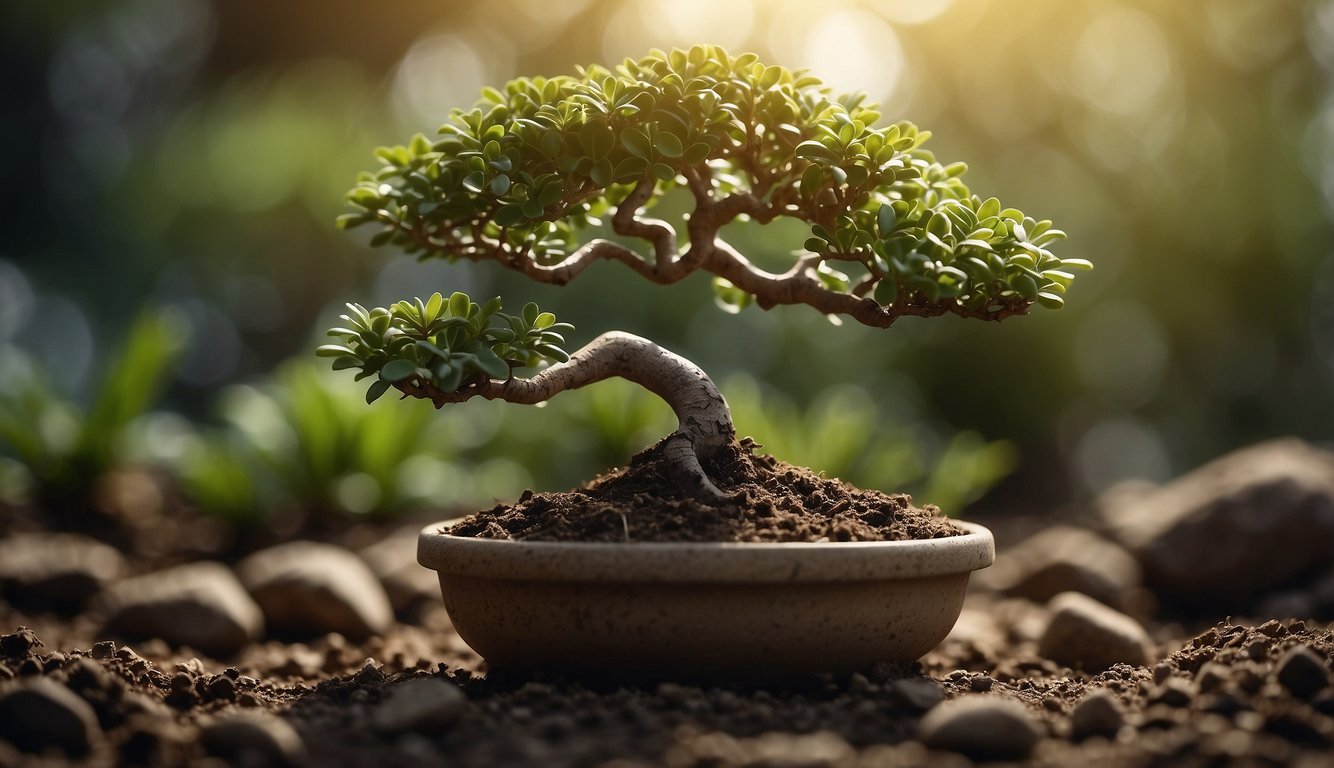TheHerbProf.com is a treasure trove of knowledge for those interested in natural healing and herbal remedies. The website is run by Paul Johnston MD. A naturopathic who has not only received extensive education in the field but also has personal experience in self-healing.
Jade plants are beautiful and easy-to-care-for houseplants that can add a touch of greenery to any room. Propagating jade plants is a simple and rewarding process that allows you to grow new plants from cuttings or leaves. In this article, I will share my knowledge and experience with jade tree propagation, including the best methods for propagating jade plants and tips for success.
Jade plant propagation is a great way to expand your plant collection or share your love of jade plants with friends and family.
The most common method of propagation is stem cutting, which involves taking a cutting from a healthy jade plant and rooting it in water or soil.
Another method is leaf propagation, which involves taking a leaf from a jade plant and rooting it in soil.
Both methods are easy and effective, but stem cutting is generally faster and more reliable.
When propagating jade plants, it is important to choose a healthy and mature plant to take cuttings from.
The cutting should be taken from a stem that is at least 3-4 inches long and has several leaves.
The cutting should be allowed to dry for a few days before being rooted in water or soil.
With proper care and attention, your new jade plants will thrive and bring you years of enjoyment.
Understanding Jade Plant Propagation
As an avid gardener, I have found that propagating jade plants is a fun and rewarding experience.
Jade plants, scientifically known as Crassula ovata, are succulent plants that are native to South Africa.
Propagation is the process of creating new plants from existing ones, and jade plants are well-suited for it due to their unique characteristics.
Propagation Methods Overview
There are two primary methods for propagating jade plants: stem cutting and leaf cutting.
Stem cuttings are the most common method and involve taking a cutting of the stem from the parent plant.
The cutting should be around 3-4 inches in length and should be taken from a healthy, mature plant.
Leaf cuttings are less common and involve taking a leaf from the parent plant and placing it in soil.
When propagating a jade plant, it is important to use a clean, sharp pair of scissors or pruning shears.
The cutting should be taken from the parent plant in the spring or summer, as this is when the plant is actively growing.
The cutting should be allowed to dry out for a few days before being planted in soil.
Optimal Conditions for Propagation
Jade plants require warm and bright conditions for optimal growth.
During the summer months, the plant should be placed in indirect light and should be watered regularly.
In the fall and winter months, the plant should be kept in a cooler location and should be watered less frequently.
Preparation for Propagation – Jade Tree Propagation
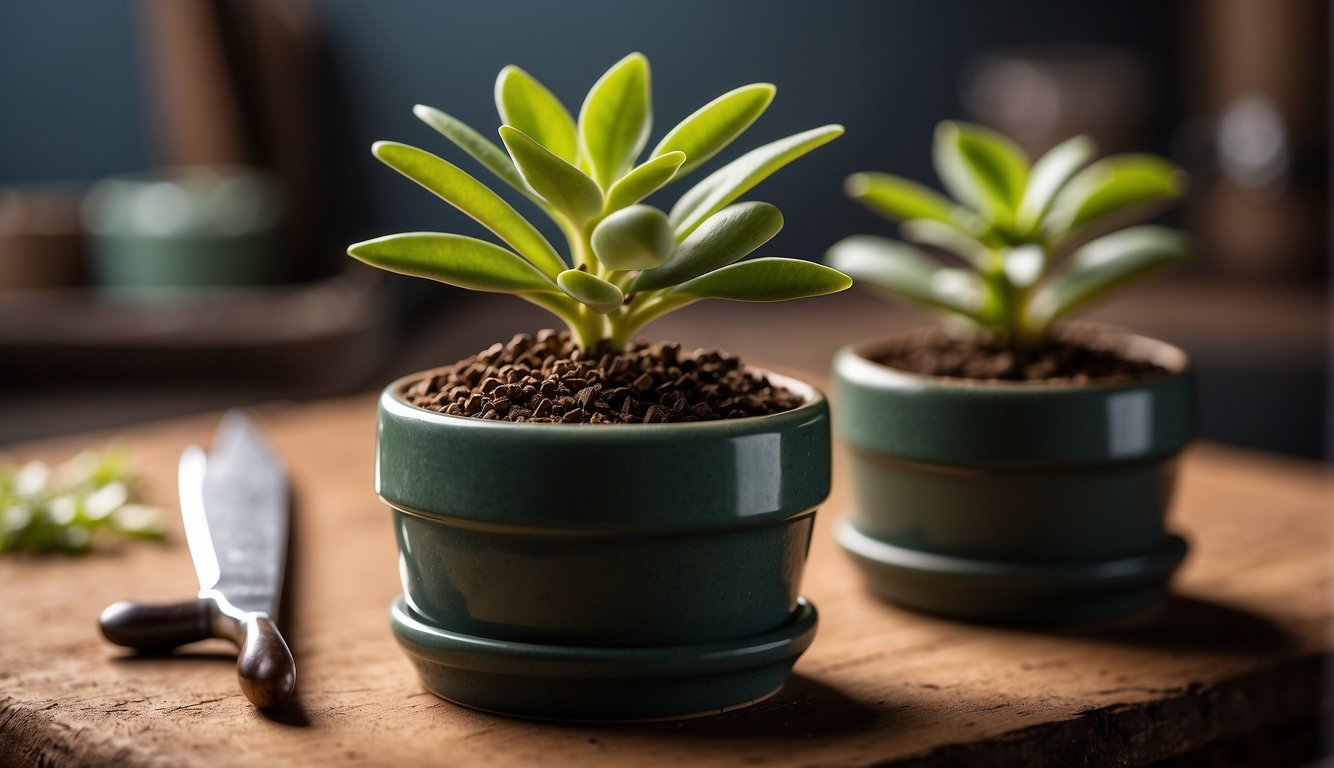
Propagation of the Jade tree is a simple process that requires careful attention to detail.
Proper preparation is the key to a successful outcome. In this section, I will discuss the two essential elements of preparation: choosing the right cutting and selecting the appropriate soil and pot.
Choosing the Right Cutting
The first step in preparing for propagation is selecting the right cutting.
It is essential to choose a healthy stem or leaf cutting from a mature, well-established plant.
The cutting should be at least 4 inches long and have a node, which is where the new roots will emerge.
When selecting a stem cutting, make sure to choose a healthy stem that is not too woody or too soft.
A stem that is too woody will not root, and a stem that is too soft will rot. The ideal stem is firm, but not too hard, and has a greenish tint.
When selecting a leaf cutting, choose a healthy leaf that is plump and firm. Avoid leaves that are yellowed, wilted, or damaged.
Soil and Pot Selection – Jade Tree Propagation
The second step in preparing for propagation is selecting the appropriate soil and pot.
The soil should be well-draining, which means it should not retain too much water.
A good soil mix for Jade tree propagation is a succulent mix, which is a blend of peat moss, perlite, and coconut coir.
When selecting a pot, choose a small pot that is just big enough to accommodate the cutting.
A pot that is too big will hold too much water, which can cause the cutting to rot. A small pot will also help to control the amount of water the cutting receives.
Propagation Techniques – Jade Tree Propagation
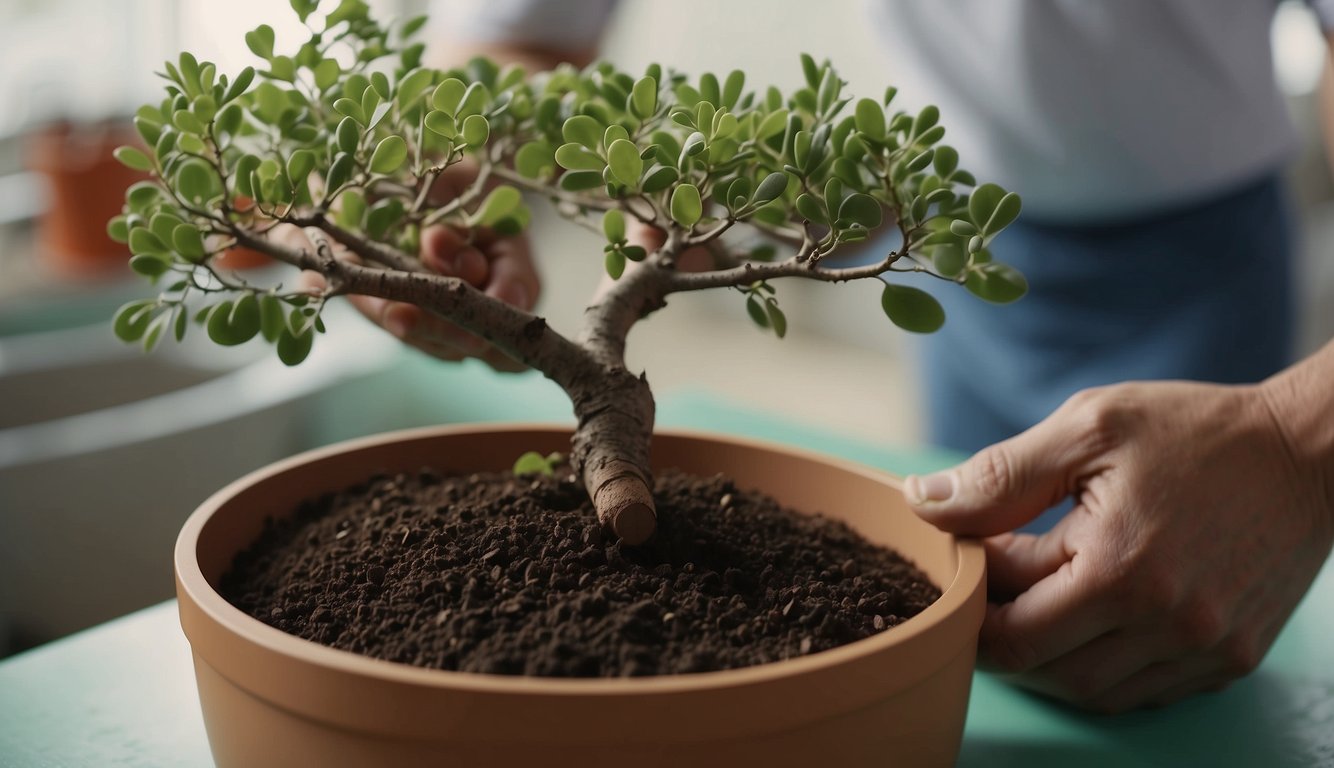
Jade plants are known for their ability to propagate easily through various methods. In this section, I will discuss the three most popular propagation techniques: stem cutting method, leaf cutting method, and water propagation method.
Stem Cutting Method
One of the most common methods of propagating jade plants is through stem cuttings.
To do this, I take a stem cutting from the parent plant, making sure it has at least two nodes. Then, I dust the stem with rooting hormone to promote root growth.
After that, I let the stem cutting callus over for a few days before planting it in well-draining soil.
I place the pot in indirect sunlight and water it sparingly until I see new growth.
Leaf Cutting Method – Jade Tree Propagation
Another popular method of propagating jade plants is through leaf cuttings.
To do this, I take a healthy leaf from the parent plant and allow it to callous over for several days. Then, I plant the leaf cutting in moist, sandy soil at a 30-degree angle, just covering the cut end of the leaf.
I place the pot in indirect sunlight and water it sparingly until I see new root growth. Once the new plant has established itself, I transplant it to its permanent home.
Water Propagation Method
Finally, water propagation is another option for propagating jade plants.
To do this, I take a stem cutting from the parent plant and place it in a glass or vase filled with water.
I make sure that the water covers the nodes but not the leaves.
I change the water every few days and wait until I see new root growth. Once the roots are long enough, I transplant the new plant into well-draining soil.
Post-Propagation Care – Jade Tree Propagation
After successfully propagating your jade tree, it is important to care for it properly to ensure its continued growth and health. Here are some things to keep in mind:
Rooting and Potting
Once your jade tree has rooted, it is important to pot it in a suitable container.
Choose a pot that is slightly larger than the root ball, and fill it with well-draining soil. You can also add some perlite or sand to improve drainage.
Avoid using pots with no drainage holes, as this can lead to root rot.
Watering and Feeding – Jade Tree Propagation
Jade trees are succulents and do not require frequent watering.
Allow the soil to dry out completely between waterings, and be careful not to overwater.
During the growing season, fertilize your jade tree every two to three weeks with a balanced fertilizer.
Light and Temperature Requirements
Jade trees require bright, indirect light to thrive.
Direct sunlight can scorch the leaves, so it is best to place your jade tree near a window that receives bright, indirect light.
They also prefer warm temperatures between 65 and 75 degrees Fahrenheit.
Avoid placing your jade tree near drafty windows or doors, as this can cause stress and damage to the plant.
Troubleshooting Common Issues – Jade Tree Propagation
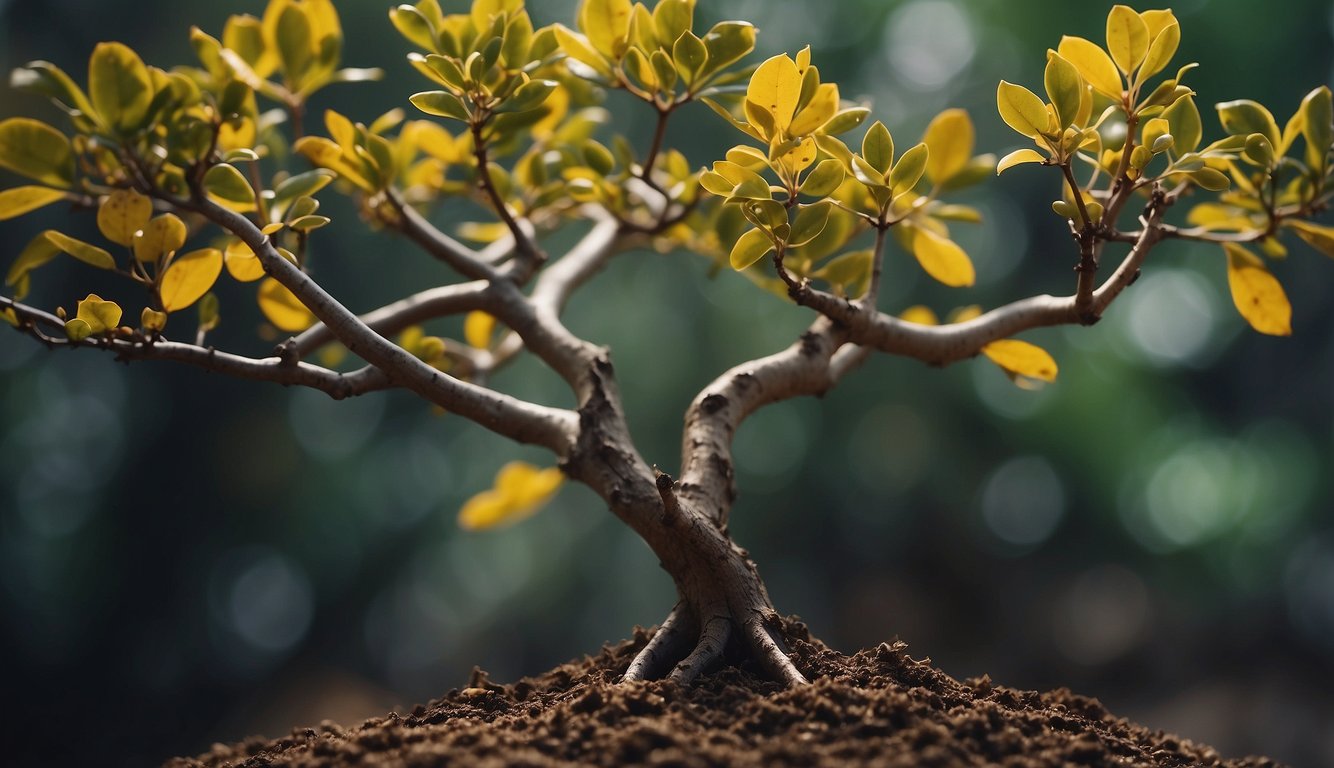
Jade tree propagation can be a fun and rewarding experience, but it’s not always smooth sailing. Here are some common issues that you may encounter and how to address them.
Dealing with Pests and Diseases
Jade plants are generally hardy and resistant to pests and diseases, but they can still fall victim to a few common problems.
One of the most common pests is the spider mite, which can cause yellowing leaves and webbing.
To get rid of spider mites, you can spray your plant with a mixture of water and dish soap, or use a commercial insecticide.
Another common pest is the mealybug, which can cause white, cottony growths on the leaves and stems.
To get rid of mealybugs, you can wipe them off with a cotton swab dipped in rubbing alcohol, or use a commercial insecticide.
Jade plants can also be susceptible to bacterial and fungal diseases, which can cause black spots on the leaves or stem rot.
To prevent these problems, make sure your plant is planted in well-draining soil and avoid overwatering.
If you do notice signs of disease, you may need to remove the affected leaves or stems and treat the plant with a fungicide.
Addressing Slow or Stunted Growth – Jade Tree Propagation
If your jade plant is not growing as quickly as you’d like, there are a few things you can do to encourage growth.
First, make sure your plant is getting enough light. Jade plants need bright, indirect light to thrive, so consider moving your plant to a sunnier spot.
You may also need to repot your plant if it’s outgrown its current container.
When repotting, make sure to use a well-draining soil mix and prune any roots that are circling around the root ball.
Finally, consider pruning your plant to encourage new growth.
Jade plants respond well to pruning and can be shaped into a variety of forms. Just be sure to use clean, sharp shears and make cuts just above a leaf node.
Advanced Propagation Tips – Jade Tree Propagation
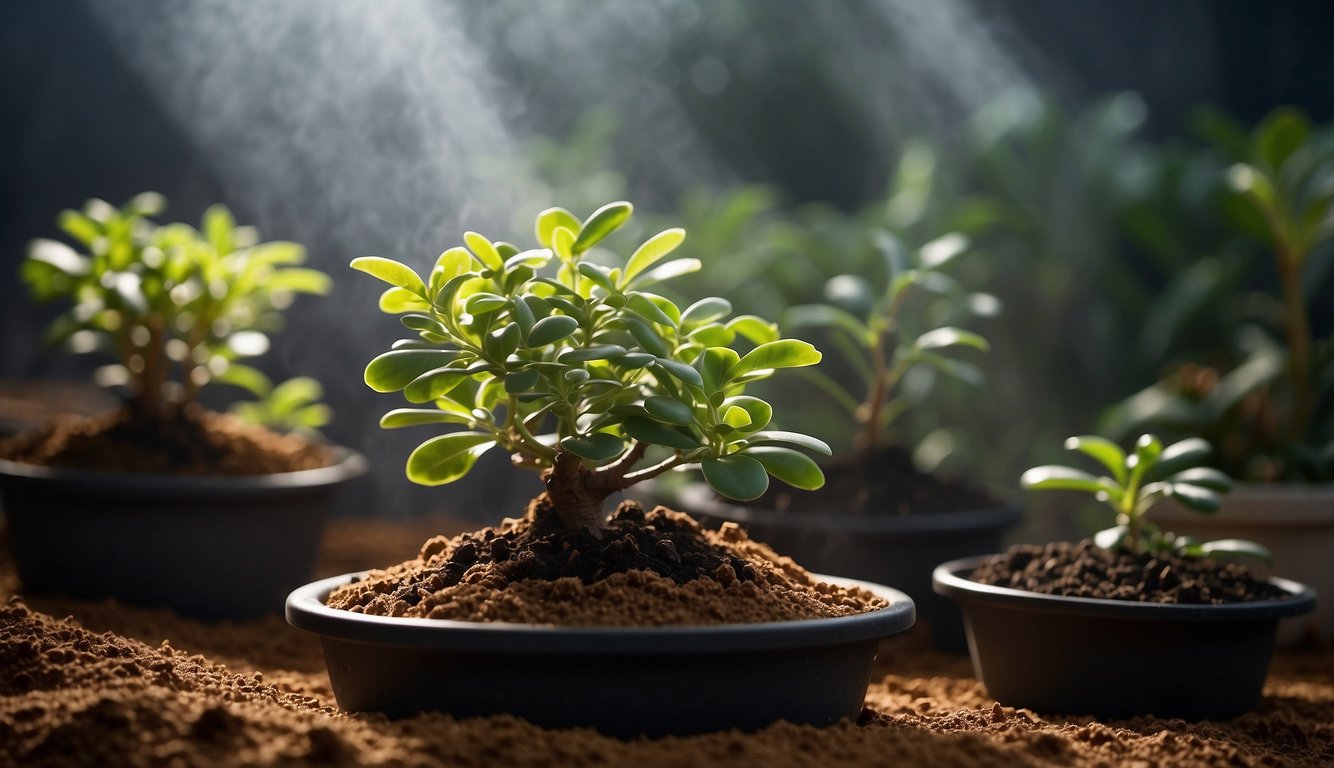
Creating a Bonsai from Cuttings
One of my favorite ways to propagate jade plants is by creating a bonsai from cuttings. This method involves pruning the plant and shaping it into a miniature tree.
To create a bonsai, I start by selecting a healthy jade plant and pruning it to the desired shape. I then use rooting hormone powder to help the cuttings take root.
Once the cuttings have rooted, I carefully remove them from the soil and transfer them to a bonsai pot.
I use a well-draining soil mix and add a layer of rocks at the bottom of the pot to improve drainage. Over time, I continue to prune and shape the plant to maintain its miniature tree shape.
Maximizing Success Rates
If you want to maximize your success rates when propagating jade plants, there are a few tips that can help.
First, make sure to use a well-draining soil mix when planting your cuttings. This will help prevent overwatering and root rot.
Second, consider using a rooting hormone to help your cuttings take root.
Rooting hormones contain hormones that stimulate root growth and can help increase your success rates.
Finally, make sure to prune your jade plant regularly to promote growth and prevent disease.
When pruning, make sure to remove any dead or damaged branches and use sharp, clean pruning shears to prevent the spread of disease.
Before You Go – Jade Tree Propagation
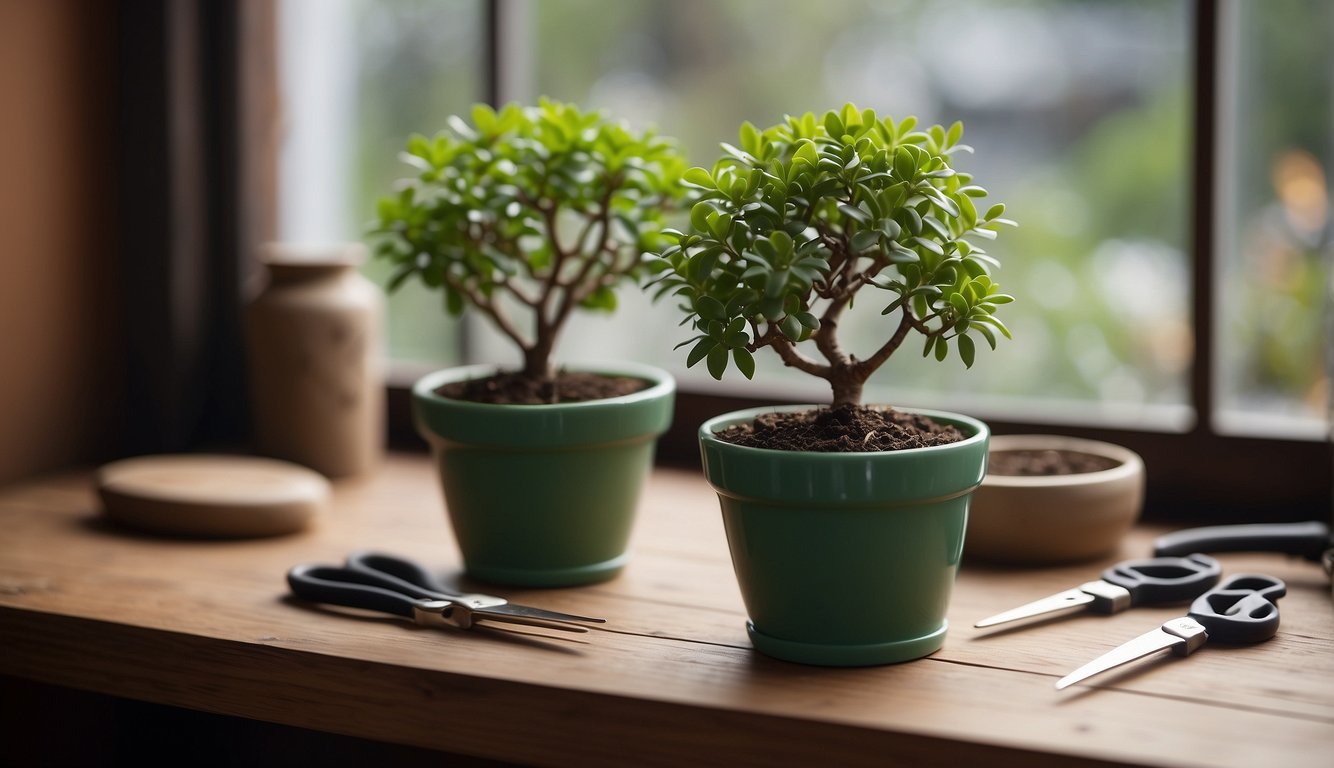
Propagating jade trees is an easy-to-grow process that can be done in several ways. Whether you choose to propagate through stem cuttings or division, understanding the basics of jade tree propagation is crucial to ensure success.
By following the proper steps and providing the right care, you can create new jade trees and rejuvenate existing ones.
It’s important to use clean tools, provide proper care, and give the new plants time to establish themselves.
Overall, jade trees are a great addition to any indoor or outdoor garden. They are easy to care for and can live for many years with the proper care. So, if you’re looking to expand your collection or gift a baby plant to someone else, propagating a jade tree is a great option.
Jade Tree Propagation: A Herbalist’s Perspective
Today, we’re going to branch into a topic that’s as green as the jade in our gardens – Jade Tree Propagation.
Now, you might be wondering, what’s so special about propagating a jade tree? Well, it’s simple. Jade trees are easy to propagate, and they’re incredibly resilient. You can grow a whole new tree from just a single leaf or stem cutting!
But here’s the fun part – propagating jade trees doesn’t just add beauty to your garden. It also benefits the soil. By improving soil health, it creates a nurturing environment for your herbs to grow.
Now, let’s connect this back to our home page, theherbprof.com. Our website is all about celebrating the magic of herbs and exploring the wonderful world of herbalism. And guess what? By understanding the benefits of jade tree propagation, you’re contributing to this world in your own unique way.
So, next time you’re tending to your garden, remember to propagate some jade trees. Not just for their beauty, but also for their benefits to the soil. After all, a happy garden is a garden where all life forms live in harmony.
References – Jade Tree Propagation
Little Herb Encyclopedia, by Jack Ritchason; N.D., Woodland Publishing Incorporated, 1995
The Ultimate Healing System, Course Manual, Copyright 1985, Don Lepore
Planetary Herbology, Michael Tierra, C.A., N.D., Lotus Press, 1988
Handbook of Medicinal Herbs, by James A. Duke, Pub. CRP Second Edition 2007
The Complete Medicinal Herbal, by Penelope Ody, Published by Dorling Kindersley
Check the Following Articles!
Black Soldier Fly Compost: How to Make and Use It
What Do Growing Brussel Sprouts Look Like?
Easy Potato Growing: Tips for a Bountiful Harvest
Best Winter Squash: Varieties for Delicious Meals
Frequently Asked Questions – Jade Tree Propagation
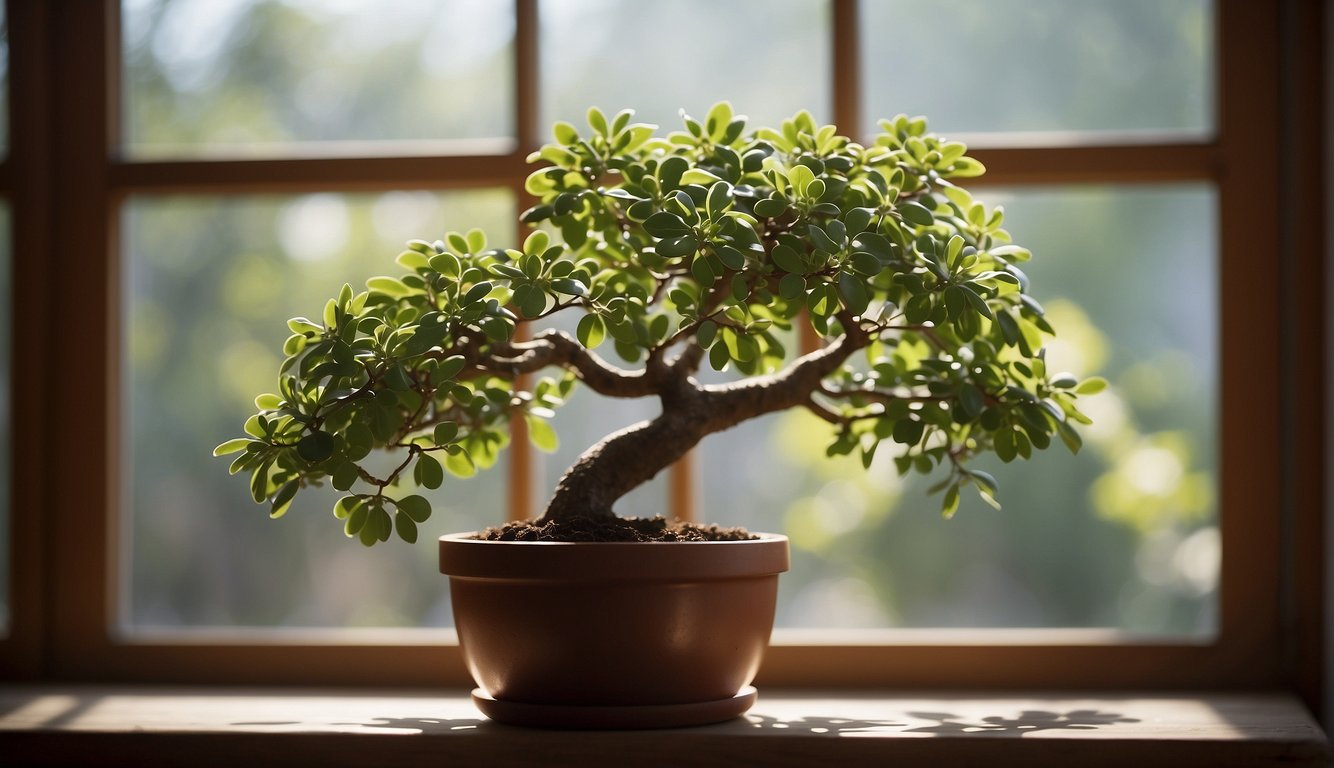
How do you propagate a jade plant using leaf cuttings?
Jade plants can be propagated using leaf cuttings by following these steps:
- Choose a healthy mature leaf from the plant.
- Cut off the leaf from the stem, making sure to include a small part of the stem.
- Let the leaf dry for a few days in a shaded, dry location.
- Once the cut has dried, plant the leaf in well-draining soil.
- Water sparingly, and make sure to keep the soil moist but not wet.
- Wait until roots and new growth appear.
What is the best method to root a jade plant cutting in water?
Rooting a jade plant cutting in water is a simple process that can be done by following these steps:
- Cut a healthy stem from the jade plant.
- Remove any leaves from the bottom of the stem, leaving only the top few leaves.
- Place the stem in a jar or vase filled with water.
- Change the water every few days to prevent bacteria growth.
- Wait until roots appear, and then transplant the cutting in soil.
Can you grow a jade tree from a stem cutting, and if so, how?
Yes, jade plants can be grown from stem cuttings by following these steps:
- Choose a healthy stem from the jade plant.
- Cut off a 3-4 inch piece of the stem using a clean, sharp knife or scissors.
- Let the cutting dry for a few days to form a callus over the cut area.
- Plant the calloused end in well-draining soil.
- Water sparingly until roots form and new growth appears.
What are the steps to propagate a jade plant in soil for optimal growth?
To propagate a jade plant in soil for optimal growth, follow these steps:
- Choose a healthy stem from the jade plant.
- Cut off a 3-4 inch piece of the stem using a clean, sharp knife or scissors.
- Let the cutting dry for a few days to form a callus over the cut area.
- Plant the calloused end in well-draining soil.
- Water sparingly until roots form and new growth appears.
- Place the plant in a location with bright, indirect sunlight.
- Fertilize the plant with a balanced fertilizer every 2-3 months.
How can you encourage a jade plant to become fuller and bushier?
To encourage a jade plant to become fuller and bushier, follow these steps:
- Prune the plant regularly to remove any dead or damaged branches.
- Pinch off the tips of the branches to encourage branching.
- Provide the plant with bright, indirect sunlight.
- Water the plant sparingly, allowing the soil to dry out between waterings.
- Fertilize the plant with a balanced fertilizer every 2-3 months.
Is it more effective to propagate a jade plant in water or soil?
Both methods of propagation can be effective, but rooting in soil is generally more reliable.
Propagating in water can be a good option if you want to watch the roots grow, but it can be more difficult to transplant the cutting to soil without damaging the roots.
